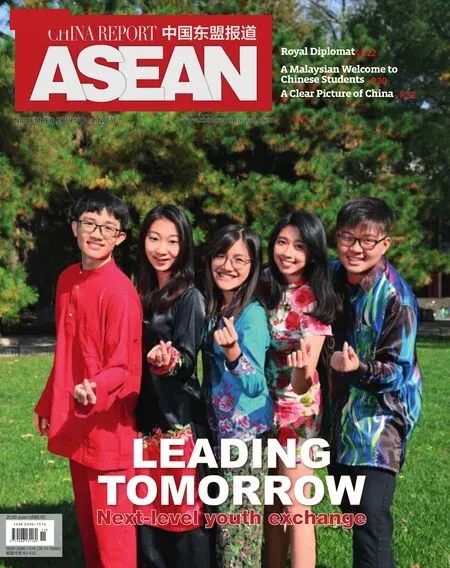ETERNAL GREEN
2019-12-04ByLiLi
By Li Li
The International Horticultural Exhibition 2019 Beijing closes with a bang
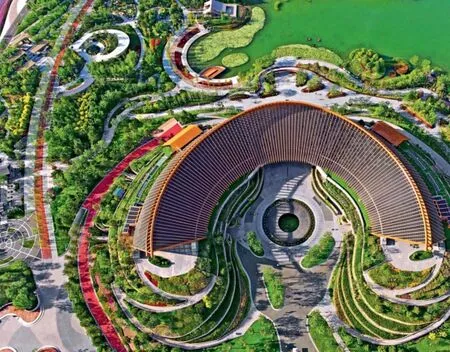
The China Pavilion of the International Horticultural Exhibition 2019 Beijing.
On the night of October 9, the International Horticultural Exhibition 2019 Beijing dropped its curtain with a ceremony themed “Ode to the Harvest” in the city’s Yanqing District.Spanning 162 days from balmy spring to golden autumn, the Expo was a spectacular event with the largest exhibition scale and record-breaking participation from around the world.Featuring abundant exhibits,overwhelming cultural activities and far-reaching influence, the event played a milestone role in the development of International Horticultural Exhibitions.
Beijing Expo 2019 , themed“Live Green, Live Better”,presented a vision of humans living in harmony with nature.In his remarks at the opening ceremony of the Expo, President Xi Jinping called for jointly building a foundation of ecological civilization and taking the path of green development,and demonstrated to the world that China is ready to work with all other countries to build a better homeland and a community with a shared future for mankind.
Vicente Loscertales, secretary general of the International Exhibitions Bureau, highly praised the Beijing Expo.“Through the Beijing Expo,we can see that the country attaches high importance to environmental progress and constructing a community with a shared future for mankind,” he opined.“You may even catch a glimpse of the country’s future through this event.”
Vision of Green Development
Beijing Expo 2019 presented a sea of blossoms, a marvelous green gathering, an epic garden and an excellent opportunity for cultural exchange.It celebrated achievements in green development made by different countries and cultures.
The German Exhibition Garden embraced the theme of“Sowing the Future,” and Britain named its Garden “Innovation for a Green Future.” The designs of many country gardens featured futuristic elements.Top horticultural designers from around the globe built 14 gardens of different styles and visions, which collectively helped explore solutions to restoring and coexisting with nature by demonstrating a variety of ecological visions and philosophies.
On the east side of the international garden area was a group of white structures,the Exhibition Garden of the Netherlands.“By pursuing green development with China, we aim to better protect and preserve our ecological environment,” the Dutch horticulturist explained.The structures were designed to resemble typical Dutch gardens with various indigenous plants like the newest species of tulips and hyacinths.Designers applied elements such as idyllic scenes and roof gardens to express their vision of a vigorous green city.
“I have never seen a single hyacinth plant like this before,”reported Wan Baolin, a visiting gardener.He was stunned by the kaleidoscope of plants in the international gardens.
On the west side of the Beijing Garden is a section of red wall blending into the shadow of a green willow tree that has been growing there for over a century.The Beijing Garden was a good example of finishing a building without changing or damaging the original vegetation.Over 50,000 plants were nurtured in the garden, creating a cool space and ecological wonders for visitors.Everything in the structure was natural: Chirping of birds and bugs radiated out of the demonstration zone in the southern space of the Guishui River while raindrops merrily seeped into grassland stretching 20 miles, moistening the entire garden.With no artificial drainage in the area,the soil functions like a sponge to capture water.Green designs themed around environmental protection could be seen all over the four major pavilions:China Pavilion, International Pavilion, Botany Pavilion and Life Experience Pavilion.All attractions in the Beijing Expo park highlighted philosophies of green development and environmental protection.
Technology provides solutions for green development.Thanks to a series of green technologies like architectural shading, natural ventilation,solar energy, evaporative cooling,trickle irrigation and raindrop collection, the International Pavilion became a green building featuring low energy consumption.In the exhibition hall of the Botany Pavilion,high-tech digital image devices created a virtual mangrove forest to demonstrate the growth mechanism of the mangrove forest as it adapts to fluctuations of the sea tide.Interactive light and sound appealed to all of the senses, giving visitors full immersion in the digital experience environment as they became enlightened as to the incredible power of mangroves.
Foreign gardens in various exotic styles presented visitors with scenes of diverse traditions,cultures and plants existing in harmony.Japanese and Indian gardens focused on horticulture and lifestyles, British and German gardens displayed a marvelous mix of traditional and modern horticulture, Qatar and UAE gardens highlighted technical elements in gardening,and African countries’ joint exhibition garden featured a blending of distinct cultures and horticultural buildings.The harmony between man and nature stretched beyond the gardens, inspiring visitors to leave with motivation to strive for environmental progress.
“The International Horticultural Exhibition 2019 Beijing was spectacular,” declared Jiang Zehui, president of the China Flower Association and deputy director of the organizing committee of the Expo.“The distinct and impressive themes of the exhibitions ensured the Expo was a professional and extraordinary event.”
ASEAN Footprints
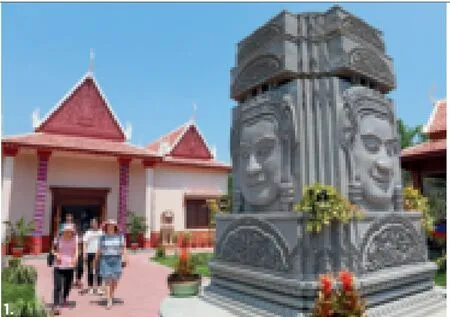
1.Stone statue of a four-faced Buddha in the Cambodia Garden.
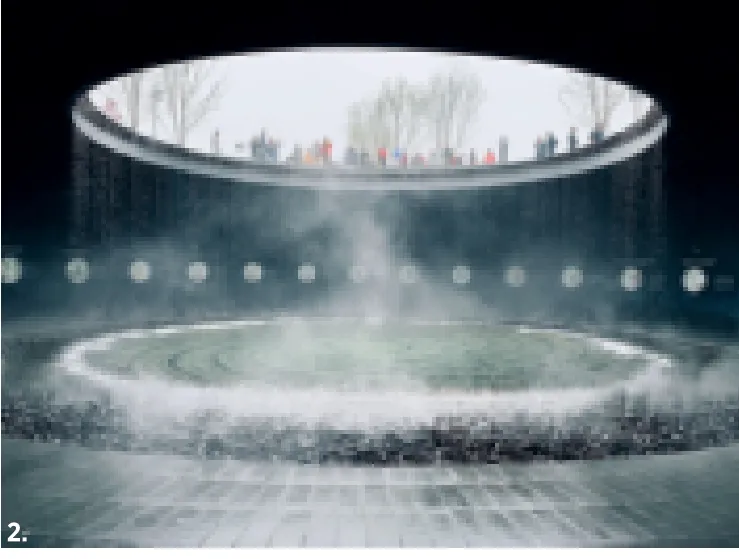
2.The sunken water tank in the ChinaPavilion.
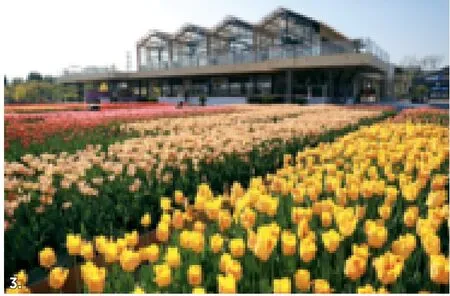
3.A sea of tulips at the International Horticultural Exhibition 2019 in Yanqing District of Beijing.

4.On August 31,Cambodia Day was celebrated at the International Horticultural Exhibition 2019 Beijing.Pictured is a performance of a cultural dance for the event.

A view of the closing ceremony of the International Horticultural Exhibition 2019 Beijing on October 9.
The building of the Myanmar Garden was an ornate rectangle house with a red roof and white walls, topped with golden Myanmar decorations glimmering under the sunshine.The woman overseeing the garden was hospitable, spoke fluent Chinese and told people to call her “Myanmar Auntie.”
“The design of the whole building captured auspiciousness,” she opined.“The pagoda and ship miniatures in front of the house symbolize safety, and the images of peacocks on the door indicate good omens.” A display more than two meters tall graced the entrance of the garden, and visitors could rest in pavilions in the courtyard.According to the guide, characteristics of the main house such as upturn eaves and bright colors were inspired by the Mandalay Palace in Myanmar.To capture pure Myanmar style, the stainlesssteel sheet gilding decorations on the roofs and eaves were custom-made three months in advance in Myanmar—all handmade by professional artisans.Construction done in China was even overseen by experienced traditional Myanmar architects who appeared on site.
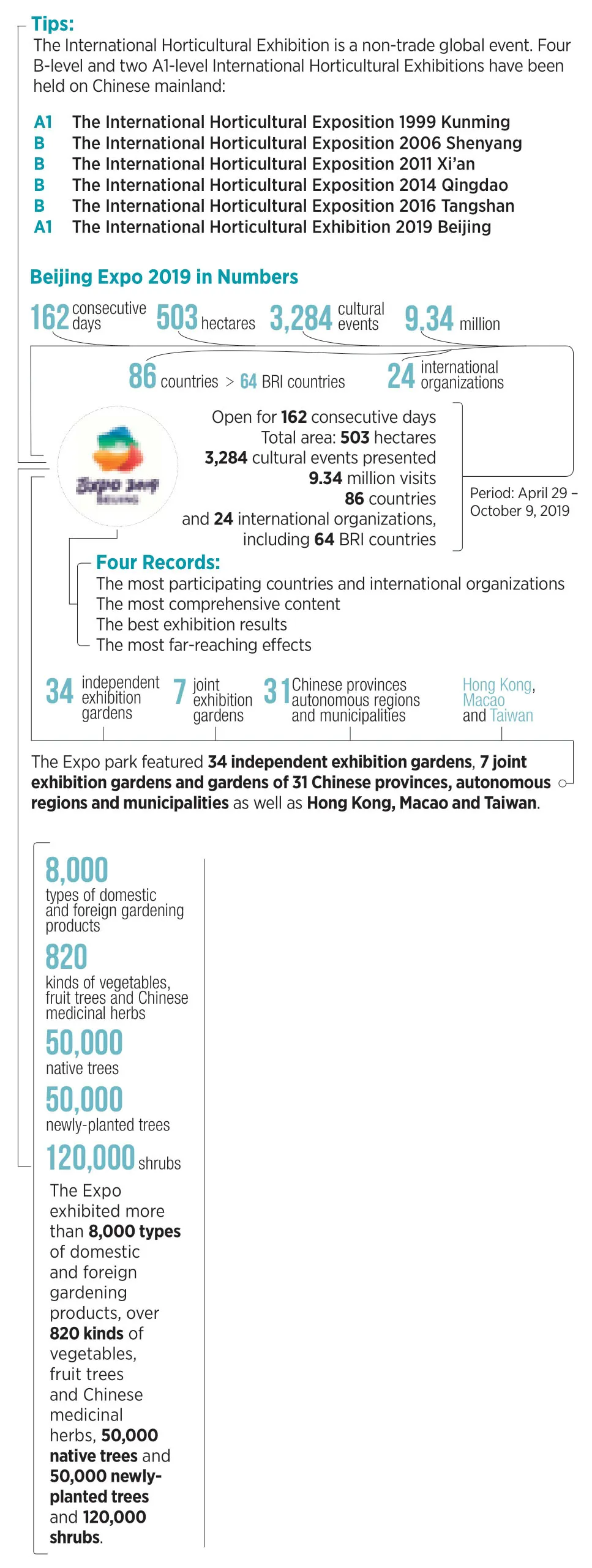
In the exhibition hall, red,green and yellow ribbons capturing the colors of the Myanmar national flag hung from the roof.Visitors could learn about the country and its scenic attractions through displays on the walls.Various handicrafts with Myanmar characteristics such as wood figurines and the puppets hanging over bamboo mats were particularly attractive to visitors.The guide explained that Myanmar people are fond of flowers.She and her colleagues wanted to bring representative specimens to the Expo, but the local conditions prevented it.So instead they exhibited pictures of the flowers to introduce them to visitors.
“Myanmar Auntie” organized several showcases to display the country’s indigenous jade,ruby and sapphire products and handicrafts as well as agricultural products.“Myanmar grows topshelf rice, beans and a bounty of fruits including endemic durians and red bananas,”she proclaimed.“I have been exhibiting our exports for 26 years and often come to China.I like the country and have many friends here.I hope this exhibition is an opportunity for Chinese people to get to know Myanmar as well as the Myanmar people.”
In the Thailand Garden,visitors could experience green life, society and culture of Thailand in a striking red building with a spire flanked by a white elephant sculpture nestled amidst clear waters and a wide variety of ornamental plants, vegetables, fruits and herbs.Traditional Thai wooden stilted house feature upper and lower floors.While the upper floor is the living space, the bottom level lacks walls.Simple wooden flooring enables storage space or a place to keep boats.The house at the expo was built with traditional woodworking techniques on a mortise and tenon structure.Thai architects constructed the wooden building in Thailand six months in advance before breaking it up into pieces for transport to the Beijing venue.All materials in the stilted houses except the foundation were transported from Thailand, ensuring it was indeed “Made in Thailand.”
“Thailand will continue to work closely with China to promote sustainable development and build a beautiful home on the planet,”insisted Mr.Piriya Khempon,Thai Ambassador to China.He added that Thailand Day presented an opportunity to introduce Thailand to the international community while highlighting Thailand’s support for sustainable development and environmental protection.In the Thailand Garden, visitors could see Thai dance, enjoy art exhibitions of paper umbrella painting and fruit carving,experience Thai herbal ball massage and taste Thai food.
Themed “Fusion and Blossom,” the Cambodia Garden embodied the harmonious coexistence between man and nature while injecting Buddhist elements into horticultural art.The Cambodia Garden was designed as a miniature of the country, with the gate as a replica of the National Museum in Phnom Penh which is typical traditional Cambodian architecture.Opposite the main entrance of the garden was a stone-carved four-faced Buddha.The smile on the Buddha statue was an imitation of the Khmer smile, the world-famous scene of Angkor Wat.
While plants and flowers including palm trees and betel trees symbolizing Cambodia were planted at the entrance, half of the exhibition hall was used as a Khmer-style performance space for Cambodian dances like “Blessings,” “Khmer Cloth”and “Mythical Birds.” The other half of the space displayed Cambodian rice, medicine,peppers and handicrafts to teach visitors about the country’s trade,tourism, horticultural products and traditional culture.
The various gardens in distinctive styles became mustsee items on the checklists of tourists, and the Expo left visitors with unforgettable memories.The International Horticultural Exhibition 2019 Beijing has ended, but a new journey of promoting ecological civilization and building a beautiful home for all has just begun.
